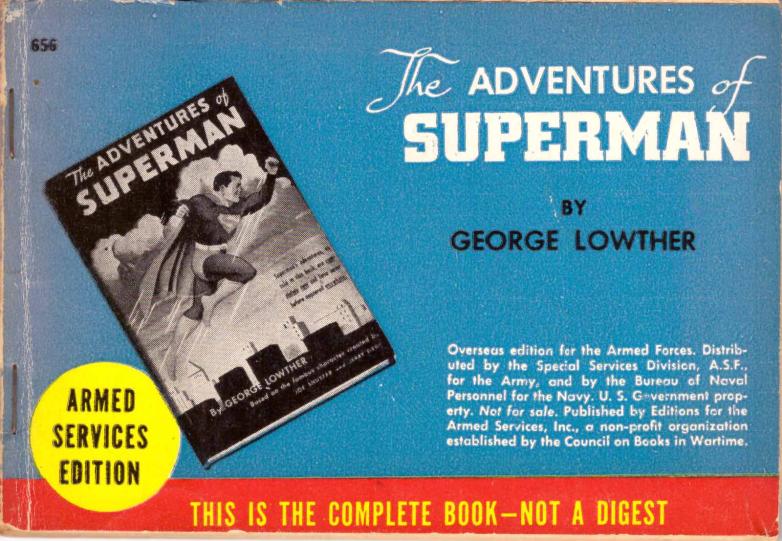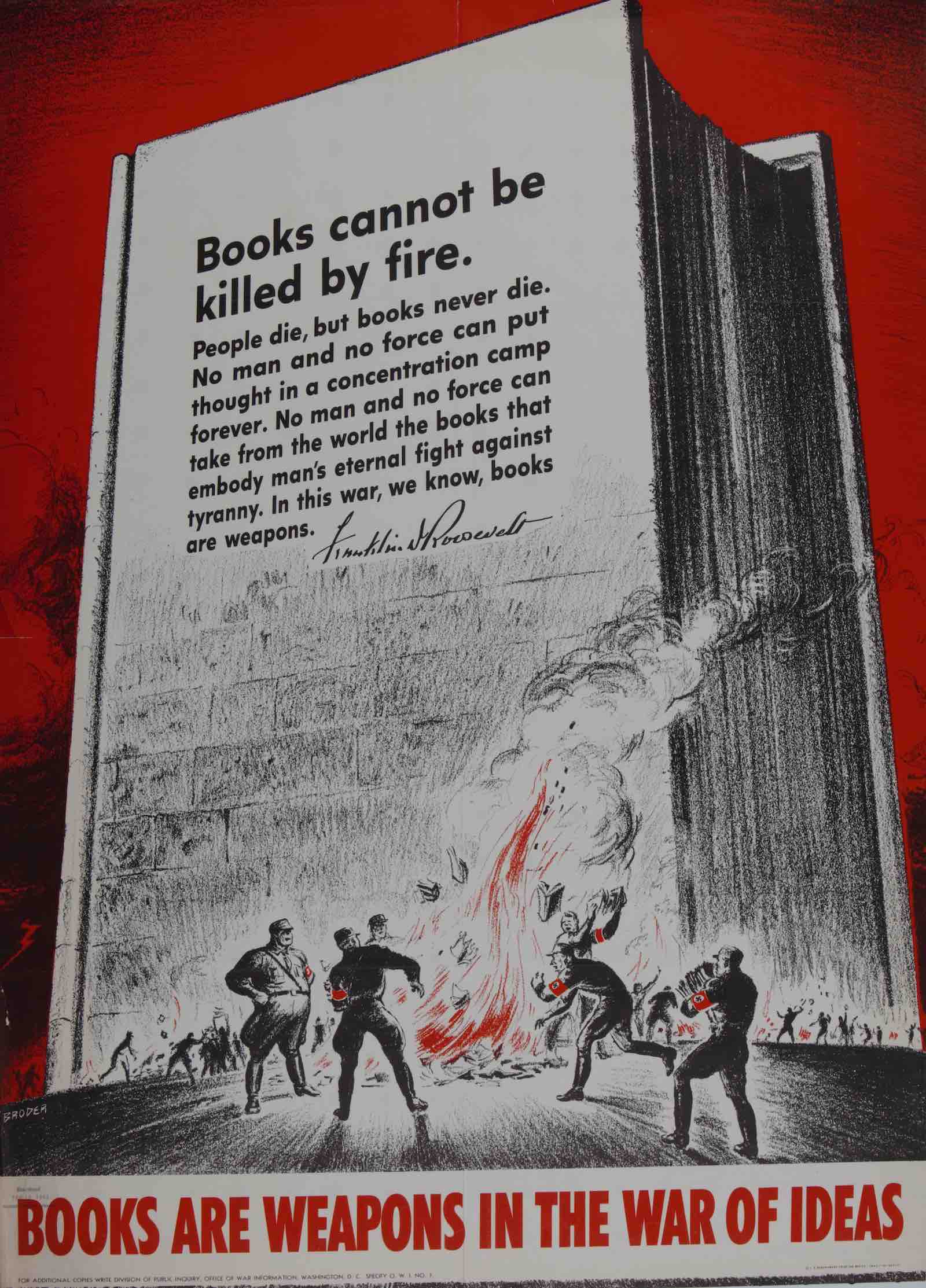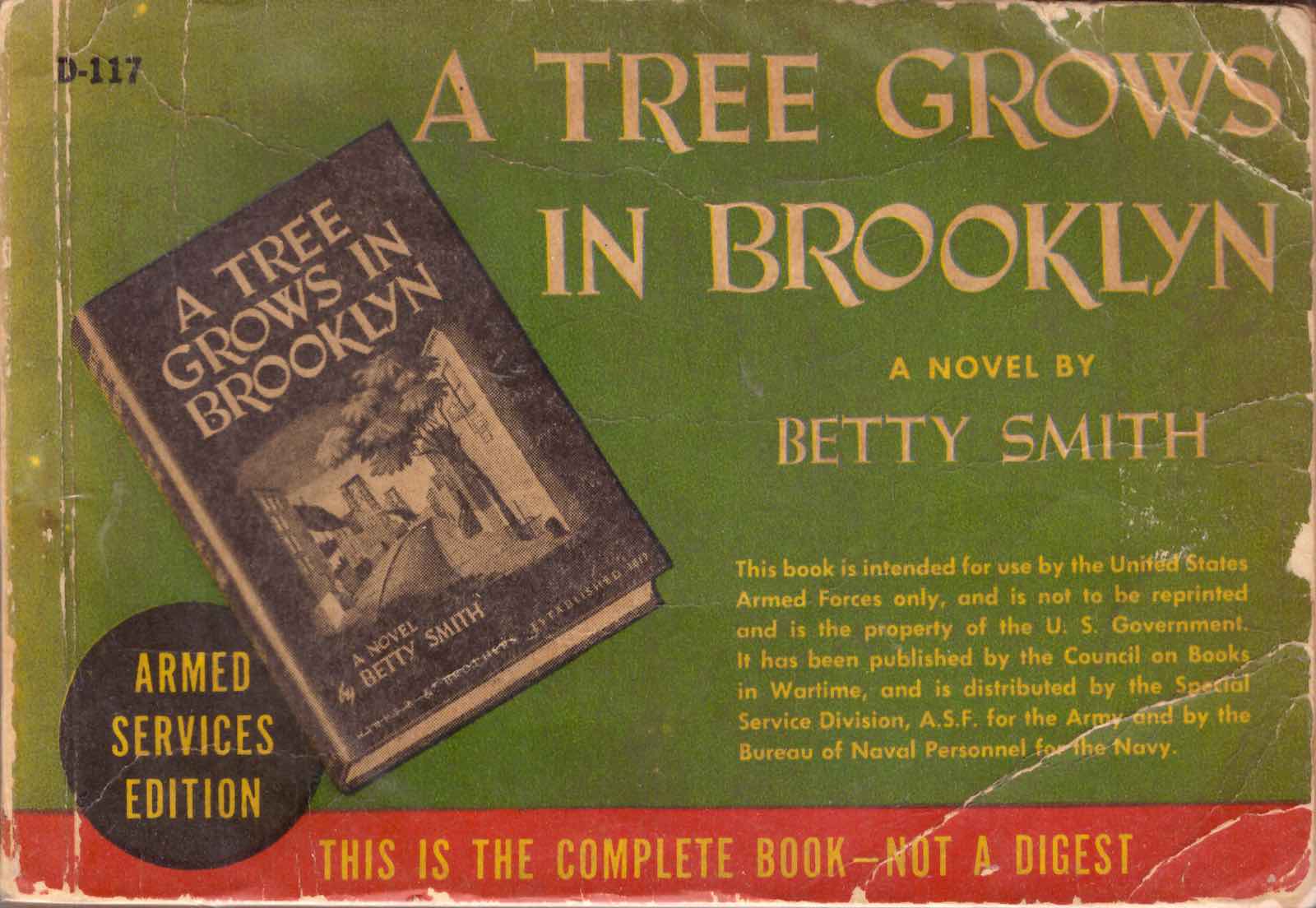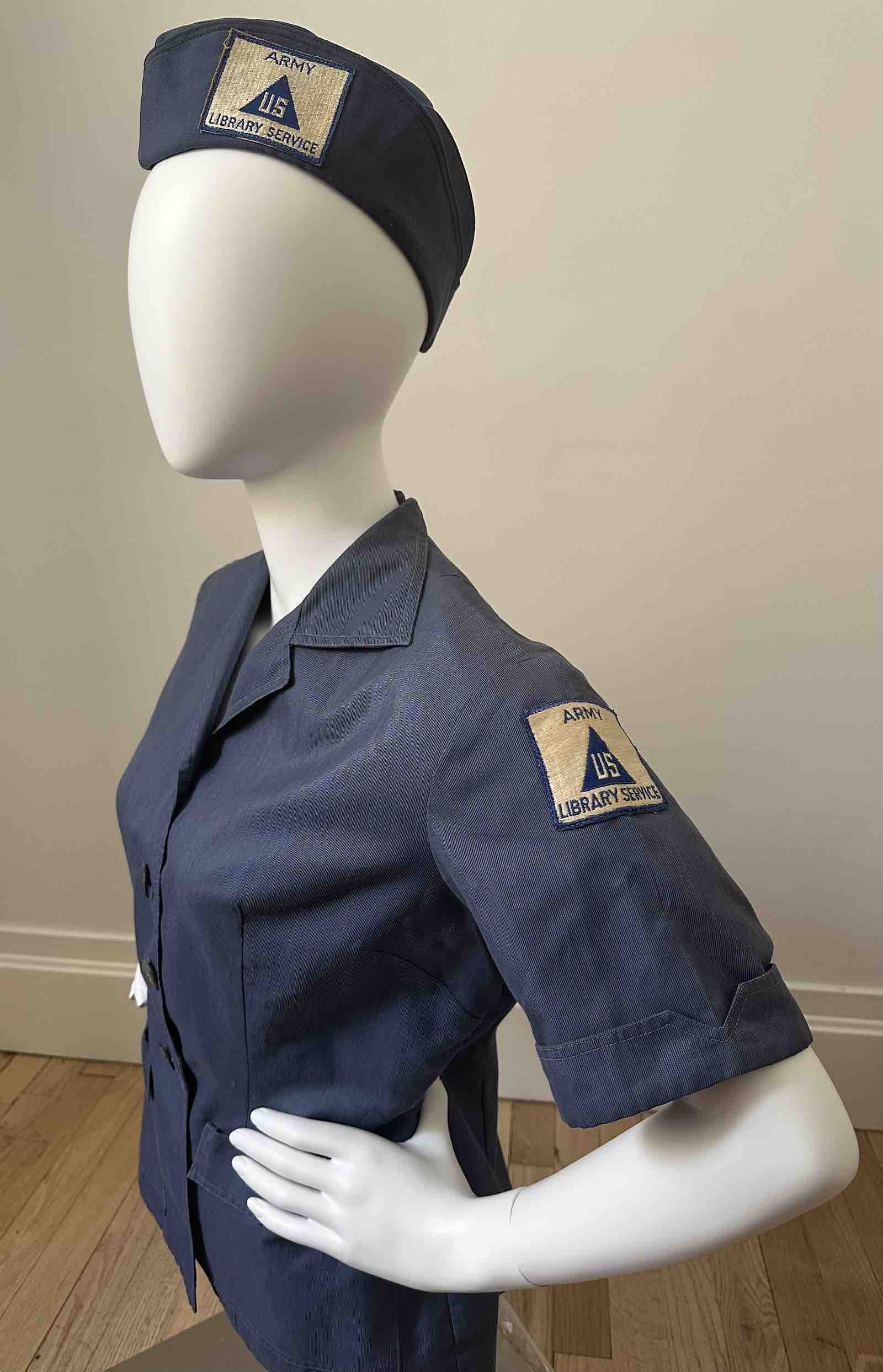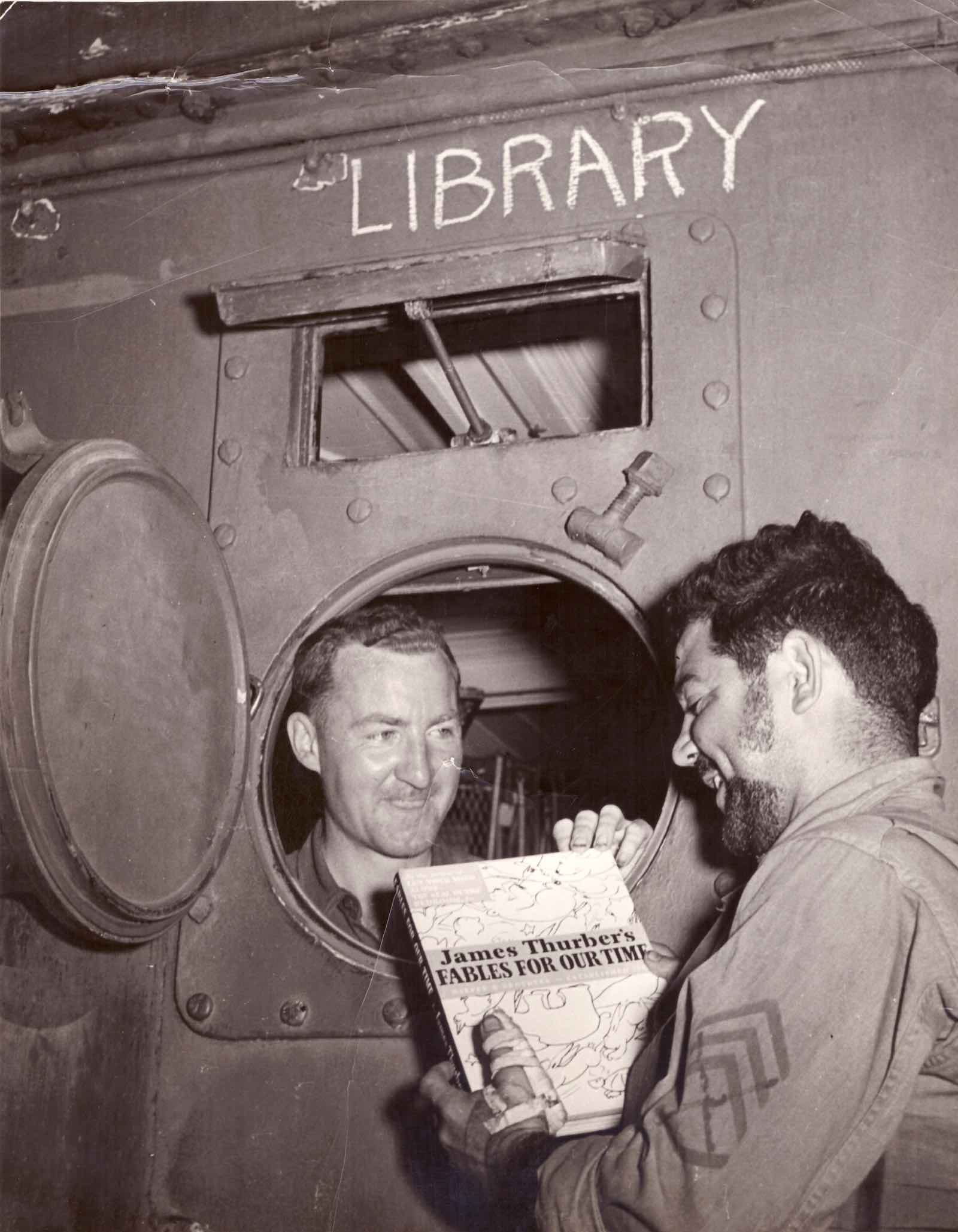“During World War II, a time of rampant propaganda and Nazi book bans, the United States military sent troops into battle armed not only with weapons, but with ideas,” said Manning. “Reading was so prevalent among the troops that in 1945, the New York Post declared that the United States had ‘the best-read Army in the world.’ Words were weapons, and the best way to fight repression was to read.”
During World War II, the Victory Book Campaign hosted a nationwide book drive urging the American public to donate their favorite books to troops. A Victory Book Campaign poster on view encourages the public to Give More Books, Give Good Books (Washington, D.C.: Office of War Information, 1943) after receiving too many volumes that were damaged or unsuitable for troops, such as cookbooks and children’s books.
Despite the approximately 18 million books donated in 1942-43, they were almost exclusively hardcover books and foot soldiers needed more portable reading materials. Army Chief Librarian Raymond Trautman invented a miniature paperback book from a blank magazine cut in half, formatted with two columns of text, a horizontal orientation, and a stapled binding. The Armed Services Edition was born.
More than 123 million pocket-sized ASE paperbacks were distributed to troops during World War II. Notable selections on view include George Lowther’s The Adventures of Superman (Editions for the Armed Services, Inc., No. 656), published in 1945 and distributed to coincide with V-E Day; a “two-up” edition, with two books printed per page, of H. G. Wells’ The War of the Worlds (Editions for the Armed Services, Inc., No. 1091) and Francis Wallace’s Kid Galahad (Editions for the Armed Services, Inc., No. 1092); and A Tree Grows in Brooklyn (Editions for the Armed Services, Inc., No. K-28), for which author Betty Smith received 10,000 troop fan letters.
The magazine industry also experimented with reducing the size of their publications, substituting newsprint for glossy paper and eliminating advertisements. On view are overseas editions of The New Yorker and the Saturday Evening Post, each with their iconic cover illustrations but printed at a fraction of the size of the domestic editions. Troops also created their own publications, with more than 4,600 unique newspapers such as The Rainbow Reveille, Tough Sheet, or Scars & Gripes produced on military mimeograph machines or “liberated” professional presses.
American soldiers in Europe carried titles and authors that had been banned and burned by the Nazis. In May 1943, the tenth anniversary of the book burnings that swept across Germany, President Franklin Delano Roosevelt paid tribute to books in a speech. “Books cannot be killed by fire. People die, but books never die,” he said, and urged Americans to read more books and donate to the Victory Book Campaign, as “in this war, we know, books are weapons.” A 1943 poster on view features a striking illustration by Steve Broder, with an excerpt from Roosevelt’s speech printed on an enormous book being licked by flames as men throw books into a bonfire.
The Best-Read Army in the World also explores how women were instrumental during World War I and World War II in getting books into the hands of troops. Many volunteers in the Women’s Army Corps were assigned to the Army’s Library Branch and served at posts around the world, facing prejudice and receiving little credit for their war work. On view in the exhibition is a late-1940s librarian uniform and garrison cap, as well as stories about trailblazing librarians.
An accompanying catalog, The Best-Read Army in the World by Molly Manning, is published by the Grolier Club.
The Grolier Club will host related free public programs, including a curator lecture during Banned Books Week, on October 2 at 6 pm, lunchtime exhibition tours on October 5, November 9, and December 7, all at 1 pm, and a virtual tour and curator Q&A on December 5 at 6 pm.

